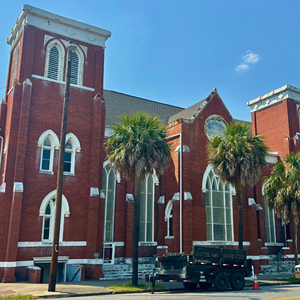Sarah comes home
[
{
"name": "Air - MedRect Combo - Inline Content 1",
"component": "14680855",
"insertPoint": "7",
"requiredCountToDisplay": "5",
"parentWrapperClass": "fdn-ads-inline-content-block"
},{
"name": "Air - MedRect Combo - Inline Content 2",
"component": "14680856",
"insertPoint": "15",
"requiredCountToDisplay": "9",
"parentWrapperClass": "fdn-ads-inline-content-block"
},{
"name": "Air - SVP - Leaderboard - Inline Content - 2",
"component": "16852291",
"insertPoint": "10",
"requiredCountToDisplay": "10",
"parentWrapperClass": "fdn-ads-inline-content-block"
},{
"name": "Air - SVP - Leaderboard - Inline Content - 3",
"component": "16852292",
"insertPoint": "20",
"requiredCountToDisplay": "18",
"parentWrapperClass": "fdn-ads-inline-content-block"
},{
"name": "Air - SVP - Leaderboard - Inline Content - 1",
"component": "16852290",
"insertPoint": "25",
"requiredCountToDisplay": "22",
"parentWrapperClass": "fdn-ads-inline-content-block"
}
]
Although she lived in the 19th century, Sarah Davenport is very real to the staff and volunteers who work at the Isaiah Davenport House.
We talk about her all the time, says Director Jamie Credle. We all have our own idea of what she looked like.
Until recently, no one knew that a likeness of Sarah existed. In February, Credle received a phone call from a Historic Savannah Foundation board member.
The board member had a friend who thought he had a silhouette of Sarahs daughter, Cornelia, in his attic. Its one of the calls museum people dream about, Credle says.
But the discovery turned out even better than Credle had hoped. The silhouette was not of Cornelia, but of Sarah herself.
Sarah Rosamond Davenport was the wife of Isaiah Davenport, a successful merchant and builder of the Davenport House, which was constructed circa 1820. She was 40 years old when the silhouette was created in 1828.
The museums collection already contained silhouettes of Cornelia and Sarahs mother, Susannah Clark, and the addition of Sarahs silhouette means that three generations of the of the family are represented. I dont know of any other house museum that has anything like this, Credle says. Its like a missing link that ties everything together.
While the Telfair Museum of Art has an extensive collection of portraits, it has only two silhouettes, Credle says. Silhouettes are sometimes found in antiques shops, but for the most part, are rare. To have one of someone who lived in the house with the artists name on the back is wonderful, she says.
A label on the back of Sarahs silhouette is similar to a label on the back of Cornelias silhouette, which also was created in 1828, when she was four. It is believed that the silhouette of Sarahs mother was made at the same time as the other two, although the backing was not saved so it is not known if it originally had an inscription.
Sarahs silhouette was in the possession of her great-great-great-granddaughter, Lucy Smith Brannen. We remembered the silhouette being in the attic and thought it might be better if the Davenport House kept it for all to enjoy, she says.
Brannen also is the granddaughter of Lucy McIntire, a Davenport descendant and one of the famous Seven Ladies who saved the Davenport House from destruction. Their action led to the formation of the Historic Savannah Foundation and the beginning of the preservation movement in Savannah.
When Mr. Brannen pulled the silhouette out of the bag and then we got a look at its label, we all sort of got giddy, Credle says. After all these years, Sarah Davenport was home.
All gifts to the museum are appreciated, but this one is especially treasured. Though it is a silhouette, this sort of gift is like any great portrait returning to the home of its original owner, says Hilton Swing, president of the Davenport House Committee. Now we can say the images of three generations of Davenport women reside at the museum.
Silhouettes were popular in the late 18th through the mid-19th centuries. They were named for Etienne de Silhouette, who was the finance minister to King Louis XV of France in 1757.
Silhouette was a financial conservative, and proved to be so miserly that he was removed from his post after just eight months. Thereafter, anything that was considered miserly or cheap was referred to as a la Silhouette.
Apparently, the name came to be applied to silhouettes because they were so much cheaper to produce than a painted portrait. Most portrait miniatures of the time were made with costly pigments on ivory or vellum and put in expensive frames.
Silhouettes could be created from paper in just one sitting and were readily available. Some cost mere pennies.
The labels on Sarahs and Cornelias silhouettes indicate they were created at the Gallery of Cuttings by Master Hankes of Common Scissors.
Sarahs silhouette has been reframed in a surround resembling the one of her mother, which has UV glass and acid-free matting and backing. The amount of detail seen in the silhouettes is striking.
Susannahs silhouette shows an elderly woman sitting in a carved wooden chair. A table stands nearby, and a cat is shown rubbing against one of the legs of the table.
Cornelias silhouette depicts a little girl with ringlets who is dressed in a ruffled dress and pantaloons. She is carrying a basket of flowers and there is a small dog at her side.
While the background of Sarahs silhouette is plainer than the other two, she is shown holding a pen in one hand and a book in the other. Because of this, the silhouette has been hung in the Morning Room, where Sarah spent much of her time writing letters and attending to accounts.
Over the years, the silhouette has sustained some damage. There is a large white stain on Sarahs skirt, which is believed due to moisture.
But despite the stain, the pattern of her dress is clearly visible because the artist used gold paint to highlight the silhouette. Sarahs tortoiseshell hair combs and golden earrings also are visible.
The silhouettes are remarkably well preserved when you consider they are made from paper that is now 176 years old. At some point, we may have all three works-on-paper conserved, but for right now, we are confident the silhouettes in the museums care are housed to museum standards, says Keith MacKay, who manages the Davenport House collection.
Despite their excitement, the museums staff kept Sarahs silhouette a secret so it could be unveiled at the annual volunteer recognition party on May 15. Credle says the volunteers literally gasped when they saw the silhouette.
We talk about these people every day, she says. This has been a museum for 40 years. Weve talked about Sarah Davenport without any idea what she looked like. The volunteers felt privileged to see her first.
During tours of the house, the rooms are interpreted by the docents. We talk about her day, Credle says. That particular silhouette ties the room together with her story.
It is the Morning Room where the volunteers talk about the daily routine of women in 1820. Cornelias silhouette hangs in her bedroom and Susannahs silhouette will be hung in the dining room. It is really helpful for visitors to actually see who we are talking about, Credle says.
Those of us who speak of Sarah Davenport regularly, as if we know her personally, now know what she looked like, Swing says. Thats a thrill. We are all delighted to have Sarahs likeness in our museum.
Credle notes that Sarahs silhouette was created at a tumultuous time in her life. It was one year after her husband died, she says. She was a widow who was pining for the things in her life she had lost. There must have been some reason for her to get these mementoes done.
Why were all three completed on the same day? They must have had a girls day out, Credle says.
In addition to the silhouettes, the museums collection contains two scrapbooks compiled by Sarah and Cornelia. Sarahs has the familys locks of hair, Credle says.
The Davenports had several children, seven of whom survived to adulthood. One of the most asked questions is, Are there descendants in the community? Credle says. The answer is yes.
Cornelia left behind more of a permanent record than the other family members. She married a well-known man, Henry Roots Jackson, Credle says.
Cornelias mother sent her to a seminary and I think she and Henry met in Connecticut, she says. Both were Georgians, and they fell in love.
Alas, their happiness did not last. The story goes that Cornelia died at 29 of ptomaine poisoning, Credle says.
Cornelia had just given birth to her fourth child, and someone brought her a seafood dish that apparently was tainted. Henry didnt remarry for several years, Credle says.
Now that Sarahs silhouette is home, the houses docents are able to tell a more complete story of her life. Added to the other two, it gives an even closer look at the family that built the Davenport House.
I wonder if they hung together in the house? Credle says. Its a wonderful thing to ponder.
The Isaiah Davenport House is located at 324 E. State St. on Columbia Square. A property of the Historic Savannah Foundation, it is open for tours daily Monday through Saturday at 10 a.m. with the last tour departing at 4 p.m. and Sunday at 1 p.m. with the last tour departing at 4 p.m. For information, call 236-8097.
We talk about her all the time, says Director Jamie Credle. We all have our own idea of what she looked like.
Until recently, no one knew that a likeness of Sarah existed. In February, Credle received a phone call from a Historic Savannah Foundation board member.
The board member had a friend who thought he had a silhouette of Sarahs daughter, Cornelia, in his attic. Its one of the calls museum people dream about, Credle says.
But the discovery turned out even better than Credle had hoped. The silhouette was not of Cornelia, but of Sarah herself.
Sarah Rosamond Davenport was the wife of Isaiah Davenport, a successful merchant and builder of the Davenport House, which was constructed circa 1820. She was 40 years old when the silhouette was created in 1828.
The museums collection already contained silhouettes of Cornelia and Sarahs mother, Susannah Clark, and the addition of Sarahs silhouette means that three generations of the of the family are represented. I dont know of any other house museum that has anything like this, Credle says. Its like a missing link that ties everything together.
While the Telfair Museum of Art has an extensive collection of portraits, it has only two silhouettes, Credle says. Silhouettes are sometimes found in antiques shops, but for the most part, are rare. To have one of someone who lived in the house with the artists name on the back is wonderful, she says.
A label on the back of Sarahs silhouette is similar to a label on the back of Cornelias silhouette, which also was created in 1828, when she was four. It is believed that the silhouette of Sarahs mother was made at the same time as the other two, although the backing was not saved so it is not known if it originally had an inscription.
Sarahs silhouette was in the possession of her great-great-great-granddaughter, Lucy Smith Brannen. We remembered the silhouette being in the attic and thought it might be better if the Davenport House kept it for all to enjoy, she says.
Brannen also is the granddaughter of Lucy McIntire, a Davenport descendant and one of the famous Seven Ladies who saved the Davenport House from destruction. Their action led to the formation of the Historic Savannah Foundation and the beginning of the preservation movement in Savannah.
When Mr. Brannen pulled the silhouette out of the bag and then we got a look at its label, we all sort of got giddy, Credle says. After all these years, Sarah Davenport was home.
All gifts to the museum are appreciated, but this one is especially treasured. Though it is a silhouette, this sort of gift is like any great portrait returning to the home of its original owner, says Hilton Swing, president of the Davenport House Committee. Now we can say the images of three generations of Davenport women reside at the museum.
Silhouettes were popular in the late 18th through the mid-19th centuries. They were named for Etienne de Silhouette, who was the finance minister to King Louis XV of France in 1757.
Silhouette was a financial conservative, and proved to be so miserly that he was removed from his post after just eight months. Thereafter, anything that was considered miserly or cheap was referred to as a la Silhouette.
Apparently, the name came to be applied to silhouettes because they were so much cheaper to produce than a painted portrait. Most portrait miniatures of the time were made with costly pigments on ivory or vellum and put in expensive frames.
Silhouettes could be created from paper in just one sitting and were readily available. Some cost mere pennies.
The labels on Sarahs and Cornelias silhouettes indicate they were created at the Gallery of Cuttings by Master Hankes of Common Scissors.
Sarahs silhouette has been reframed in a surround resembling the one of her mother, which has UV glass and acid-free matting and backing. The amount of detail seen in the silhouettes is striking.
Susannahs silhouette shows an elderly woman sitting in a carved wooden chair. A table stands nearby, and a cat is shown rubbing against one of the legs of the table.
Cornelias silhouette depicts a little girl with ringlets who is dressed in a ruffled dress and pantaloons. She is carrying a basket of flowers and there is a small dog at her side.
While the background of Sarahs silhouette is plainer than the other two, she is shown holding a pen in one hand and a book in the other. Because of this, the silhouette has been hung in the Morning Room, where Sarah spent much of her time writing letters and attending to accounts.
Over the years, the silhouette has sustained some damage. There is a large white stain on Sarahs skirt, which is believed due to moisture.
But despite the stain, the pattern of her dress is clearly visible because the artist used gold paint to highlight the silhouette. Sarahs tortoiseshell hair combs and golden earrings also are visible.
The silhouettes are remarkably well preserved when you consider they are made from paper that is now 176 years old. At some point, we may have all three works-on-paper conserved, but for right now, we are confident the silhouettes in the museums care are housed to museum standards, says Keith MacKay, who manages the Davenport House collection.
Despite their excitement, the museums staff kept Sarahs silhouette a secret so it could be unveiled at the annual volunteer recognition party on May 15. Credle says the volunteers literally gasped when they saw the silhouette.
We talk about these people every day, she says. This has been a museum for 40 years. Weve talked about Sarah Davenport without any idea what she looked like. The volunteers felt privileged to see her first.
During tours of the house, the rooms are interpreted by the docents. We talk about her day, Credle says. That particular silhouette ties the room together with her story.
It is the Morning Room where the volunteers talk about the daily routine of women in 1820. Cornelias silhouette hangs in her bedroom and Susannahs silhouette will be hung in the dining room. It is really helpful for visitors to actually see who we are talking about, Credle says.
Those of us who speak of Sarah Davenport regularly, as if we know her personally, now know what she looked like, Swing says. Thats a thrill. We are all delighted to have Sarahs likeness in our museum.
Credle notes that Sarahs silhouette was created at a tumultuous time in her life. It was one year after her husband died, she says. She was a widow who was pining for the things in her life she had lost. There must have been some reason for her to get these mementoes done.
Why were all three completed on the same day? They must have had a girls day out, Credle says.
In addition to the silhouettes, the museums collection contains two scrapbooks compiled by Sarah and Cornelia. Sarahs has the familys locks of hair, Credle says.
The Davenports had several children, seven of whom survived to adulthood. One of the most asked questions is, Are there descendants in the community? Credle says. The answer is yes.
Cornelia left behind more of a permanent record than the other family members. She married a well-known man, Henry Roots Jackson, Credle says.
Cornelias mother sent her to a seminary and I think she and Henry met in Connecticut, she says. Both were Georgians, and they fell in love.
Alas, their happiness did not last. The story goes that Cornelia died at 29 of ptomaine poisoning, Credle says.
Cornelia had just given birth to her fourth child, and someone brought her a seafood dish that apparently was tainted. Henry didnt remarry for several years, Credle says.
Now that Sarahs silhouette is home, the houses docents are able to tell a more complete story of her life. Added to the other two, it gives an even closer look at the family that built the Davenport House.
I wonder if they hung together in the house? Credle says. Its a wonderful thing to ponder.
The Isaiah Davenport House is located at 324 E. State St. on Columbia Square. A property of the Historic Savannah Foundation, it is open for tours daily Monday through Saturday at 10 a.m. with the last tour departing at 4 p.m. and Sunday at 1 p.m. with the last tour departing at 4 p.m. For information, call 236-8097.





























